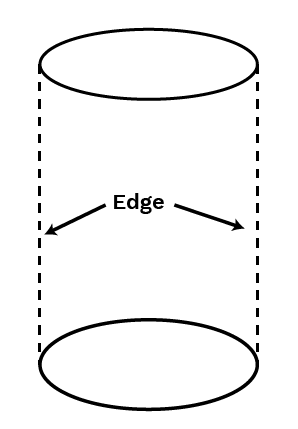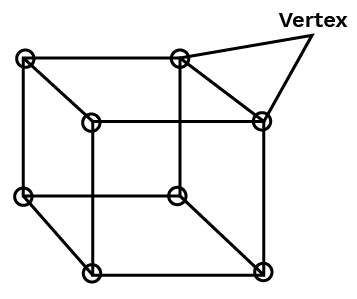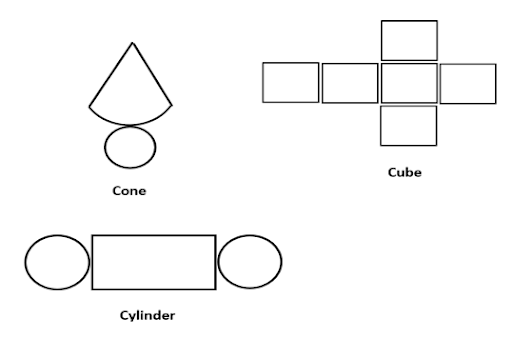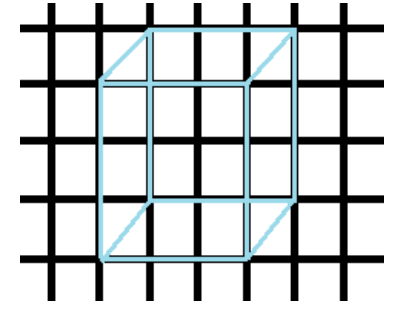Maths Notes for Chapter 13 Visualising Solid Shapes Class 7 - FREE PDF Download
FAQs on Visualising Solid Shapes Class 7 Maths Chapter 13 CBSE Notes - 2025-26
1. What are the key concepts to cover in a quick revision of Class 7 Maths Chapter 13, Visualising Solid Shapes?
For a quick revision of this chapter, you should focus on the core concepts. Start with the fundamental difference between 2D and 3D shapes. Then, cover the components of solid shapes, including faces, edges, and vertices. Also, revise the concept of nets for building 3D shapes, methods for drawing solids like oblique and isometric sketches, and how to visualise different views (top, front, and side) of a solid object.
2. How can you quickly differentiate between a 2D plane shape and a 3D solid shape during revision?
The quickest way to differentiate is by their dimensions. Plane shapes, such as squares or circles, are two-dimensional (2D) because they only possess length and breadth. In contrast, solid shapes, like cubes or spheres, are three-dimensional (3D) as they have length, breadth, and height, which gives them volume and depth.
3. What is the main difference between an oblique sketch and an isometric sketch?
Both are methods for representing 3D shapes on a 2D surface, but they differ in realism and measurement. An oblique sketch is often easier to draw but may appear distorted as it does not maintain accurate proportions. An isometric sketch, typically drawn on isometric dot paper, preserves the proportional lengths of the edges, resulting in a more realistic depiction of the solid shape.
4. How are faces, vertices, and edges related in a polyhedron?
The relationship between faces, vertices, and edges in any convex polyhedron is defined by Euler's formula. This essential formula states that the number of Faces (F) plus the number of Vertices (V), minus the number of Edges (E), always equals 2. The formula is expressed as: F + V - E = 2. This is a crucial concept to remember for verifying the properties of solid shapes.
5. Why are revision notes helpful for understanding concepts like nets and different views of solids?
Revision notes are particularly effective for a visual chapter like this because they condense complex spatial ideas into simple, memorable points. For nets, notes can illustrate common examples and rules for identifying them. For different views (top, front, side), notes can provide clear diagrams that connect the 3D object to its 2D representations, making it easier to grasp the concept of perspective without needing physical models each time.
6. What is an effective strategy to revise a visual chapter like 'Visualising Solid Shapes'?
For a visual chapter, revision should be an active process. Begin by summarising the definitions of key terms like faces, nets, and isometric sketches. Then, actively practice by drawing a few simple oblique and isometric sketches of a cube or a cuboid. Finally, challenge yourself by observing an everyday object, like a duster or a water bottle, and attempting to sketch its top, front, and side views. This hands-on approach significantly strengthens visual comprehension.
7. Can any 2D arrangement of six squares be folded into a cube? How can you quickly check if a net is valid?
No, not every arrangement of six squares can form a cube. A quick method to check a potential net is to visualise the folding process. A valid net for a cube must allow all faces to enclose a space without any overlap. A helpful trick is to identify a base face and then mentally fold the other faces upwards to see if they form the sides and a top. For instance, six squares arranged in a single long row cannot form a cube.
8. How does slicing a solid shape help in understanding its internal structure?
Slicing a solid shape reveals its cross-section, which is the 2D shape of the surface exposed by the cut. This is a powerful technique for understanding the internal composition of a 3D object. For instance:
- Slicing a cylinder parallel to its base reveals a circle.
- Slicing a cylinder vertically through its centre reveals a rectangle.
- Slicing a cube horizontally or vertically reveals a square.
9. How do the top, front, and side views of an object relate to drawing its isometric sketch?
The different views of an object serve as the fundamental blueprint for creating an accurate isometric sketch. The front, top, and side views provide the correct dimensions and features for each respective face of the solid. When you draw an isometric sketch, you are effectively combining these three separate 2D views into a single, cohesive 3D representation that shows the object from a specific angle while preserving its proportions. Mastering the views first makes sketching the complete solid much more straightforward.































